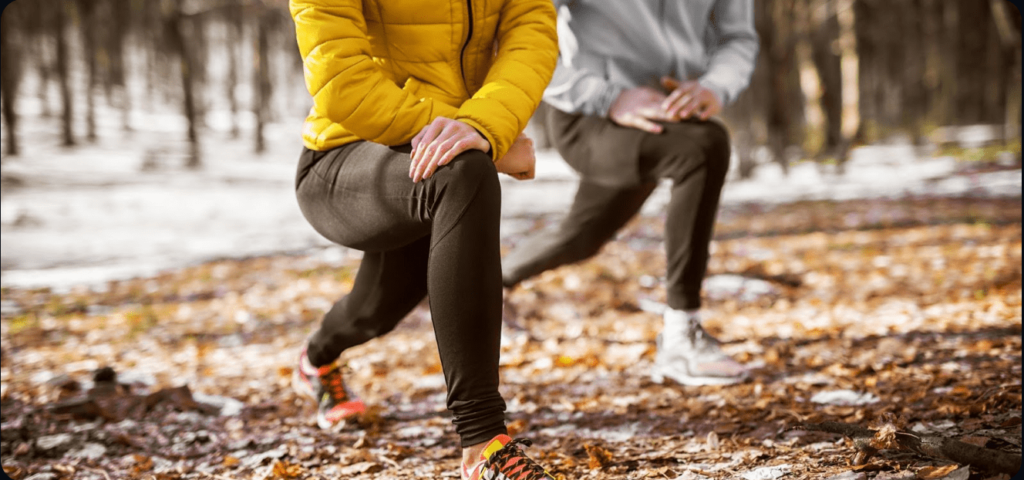A common theme we hear from many of our triathletes during the off season is they feel a little lost and not really sure what they should be doing. Our first suggestion is always to “take a little break”. Take the pressure off and have fun doing other things you enjoy such as hiking, skiing, rock climbing, etc. so you can mentally reset for the upcoming season.
We also suggest that you continue to train easy to maintain your base and focus on improving your form, whether that’s getting a swim analysis from a swim coach or a running analysis from a running coach or physical therapist. Improving your form is one way to make yourself more efficient as an athlete and with efficiency comes better performance!
If you’re 40+ and your goal is either to PR at your big race this year or you want to make sure you get through the season without any injuries, the best time you can spend during the off season is on preparing your body for the demands of training.
Many injuries that triathletes experience are traditionally referred to as ‘overuse’ injuries. We, at Body Moksha Physical Therapy, prefer to call them ‘underprepared’ injuries. You see, it’s not that you did too much…it’s more accurate to say that you did what you weren’t prepared for.
So how do you prepare your body for the demands required of training…especially if you’re planning a long course raise this coming season?

One of the best insurance policies against injuries is strength training. Running exposes your quads and calf muscles to loads almost 3-4 times your body weight. Strength training serves to train your bones, ligaments, joints and muscles to tolerate these high loads…similar to the demands of running, biking or swimming for extended periods of time. Strength training also helps thicken tendons, strengthen muscle fibers, and lay down more bone tissue to make those areas more ‘durable’, i.e. resilient. Not only that, it helps to delay fatigue, so you can race longer, without getting tired.
Some common obstacles to strength training we hear from triathletes are:
- They don’t know they should be strength training and they don’t understand the benefits.
- They don’t know where to start, what to do or how to do it.
- They are lifting way too light or not lifting enough to prepare them for their training.
- They’re not sure where in their training they should be fitting in strength.
I’ve already given you a brief explanation of why strength training is important and how it will help prepare you for your season. Let’s dive into where to start, what to do, and how to do it…
First, establish your entry point into strength training. Most people fall into one of these 4 categories:
- Never strength trained and have no idea where to start.
- Have strength trained in the past either as a college athlete or with a trainer but it’s been a while and they feel a little lost.
- Are currently strength training but not sure if they’re doing the right things the right way.
- If you’re one of the few who is consistently training, progressively overloading over time, and know exactly what you should be doing…kudos to you! Keep rocking!
Depending where you are individually on this continuum, your entry point into strength training will be different. Working one-on-one or in a small group setting is ideal and the safest, most beneficial option to establishing a consistent strength training program.
A good foundational program should incorporate variations of:
- Squats
- Deadlifts
- Chest Press
- Rows
- Farmer’s Carries
- Calf Raises
If you aren’t familiar with strength training, it is super important to learn how to do the basic movements properly before adding weight to them. Once you learn the movements, you can in progressively increase weight over time.
If you’ve had past injury or are currently dealing with one, the biggest mistake you can make is avoiding strength training. It is important to continue training within your current abilities without increasing your symptoms. Make sure you seek advice from a physical therapist who is experienced with working with triathletes to help you manage your injury or customize a strength training program that works for you.
If you’re looking for help with an injury or putting together a customized program to get you season ready, we’re just a phone call/text away. Connect with us at 973-320-2678 and we’d be happy to help!
Live strong,
Dr. Tejal Ramaiya, PT, DPT, CSCS, CMTPT/DN
Doctor of Physical Therapy
Certified Strength and Conditioning Specialist
Certified Myofascial Trigger Point Therapist – Dry Needling
973-310-2678

